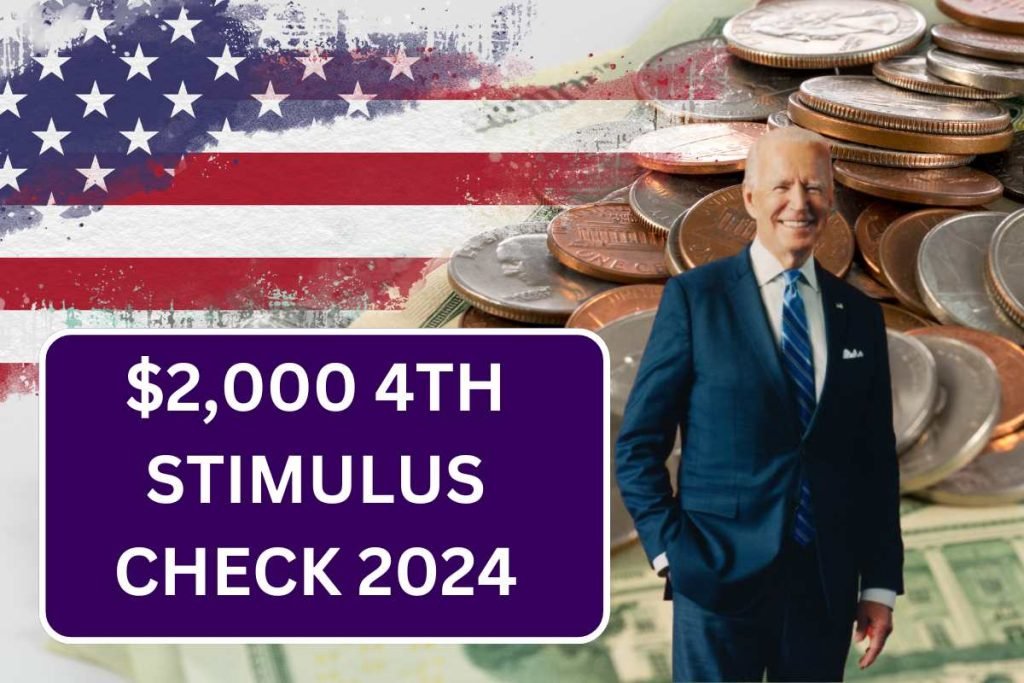As the United States grapples with economic challenges and the ongoing impact of the COVID-19 pandemic, discussions about additional financial relief measures have intensified. In 2024, there is significant buzz surrounding the potential issuance of a $2,000 fourth stimulus check specifically aimed at Social Security Disability Insurance (SSDI) recipients, Supplemental Security Income (SSI) beneficiaries, and low-income individuals. This comprehensive guide will help you understand the eligibility criteria for this potential relief payment and provide essential details on how to determine if you qualify.
Overview of the $2,000 Fourth Stimulus Check
The proposed $2,000 fourth stimulus check aims to provide financial relief to those who are most in need, particularly those receiving SSDI and SSI benefits, as well as other low-income households. This stimulus check is intended to support individuals who continue to face financial hardships as a result of the pandemic and ongoing economic uncertainty.

Purpose of the Fourth Stimulus Check
The primary objectives of the fourth stimulus check include:
- Providing Financial Relief: Offering immediate financial support to individuals struggling with the cost of living, including rising inflation and healthcare expenses.
- Boosting Economic Stability: Stimulating economic activity by increasing the purchasing power of low-income and vulnerable populations.
- Addressing Financial Inequities: Targeting assistance to groups who have been disproportionately affected by economic downturns and disruptions.
Eligibility Criteria for the $2,000 Stimulus Check
To determine if you qualify for the $2,000 stimulus check, it is essential to understand the eligibility requirements. Here are the primary criteria:
1. Social Security Disability Insurance (SSDI) Recipients
SSDI beneficiaries are individuals who receive disability benefits under the Social Security Disability Insurance program. To qualify for the $2,000 stimulus check:
- Current Eligibility: You must be actively receiving SSDI benefits. Ensure that your SSDI benefits are current and not suspended or terminated.
- Income Limits: While SSDI payments themselves do not typically affect eligibility, the overall income of your household might be considered. Ensure your total income aligns with the low-income threshold set by the stimulus package.
2. Supplemental Security Income (SSI) Recipients
SSI beneficiaries receive financial assistance based on their limited income and resources. Eligibility criteria for SSI recipients include:
- Ongoing SSI Benefits: You must be receiving SSI payments. Verify that your benefits are up-to-date and that you continue to meet SSI requirements.
- Income and Resource Limits: SSI eligibility is based on income and resources. Ensure that your income and resources fall within the limits specified for the stimulus check.
3. Low-Income Individuals
The $2,000 stimulus check also targets low-income individuals who may not receive SSDI or SSI but are still economically disadvantaged. To qualify:
- Income Threshold: Your income must fall below a specified threshold, which will be determined by the guidelines of the stimulus package. This threshold is typically set at or below the federal poverty line or a percentage of it.
- Verification: You may need to provide documentation or proof of income to confirm eligibility. Check with relevant agencies or resources for specific documentation requirements.
How to Check if You Qualify
To determine if you qualify for the $2,000 stimulus check, follow these steps:
1. Verify Your Benefit Status
Ensure that you are currently receiving the relevant benefits (SSDI, SSI, or other qualifying assistance). Check your latest benefit statements or contact the Social Security Administration (SSA) or other relevant agencies for confirmation.
2. Review Income and Resource Limits
Compare your income and resources to the eligibility criteria outlined in the stimulus package. This information is typically available through government websites or financial assistance programs.
3. Stay Informed About Official Announcements
Monitor official announcements from the federal government, IRS, or Social Security Administration for updates on the stimulus check program. Eligibility criteria and application processes may evolve, and it is important to stay updated.
4. Contact Relevant Agencies
If you are unsure about your eligibility or need assistance, contact relevant agencies such as the SSA, IRS, or local financial assistance organizations. They can provide guidance and support in determining your eligibility.
Potential Application Process
While the exact application process for the $2,000 stimulus check may vary, it generally involves:
1. Automatic Payments
In many cases, stimulus checks are distributed automatically to eligible recipients based on their existing benefit records. If you are already receiving SSDI or SSI, you may receive the payment directly without needing to apply.
2. Application Forms
If an application is required, instructions and forms will be provided through official channels. Ensure you complete and submit any required forms by the specified deadlines.
3. Verification and Processing
The government will review applications and benefit records to verify eligibility. Processing times may vary, so be patient and regularly check for updates.
Conclusion
The potential issuance of a $2,000 fourth stimulus check in 2024 represents a significant opportunity for SSDI recipients, SSI beneficiaries, and low-income individuals to receive much-needed financial support. By understanding the eligibility criteria and staying informed about official announcements, you can determine if you qualify for this relief payment. Take proactive steps to verify your status and keep track of application processes to ensure you receive the support you need.